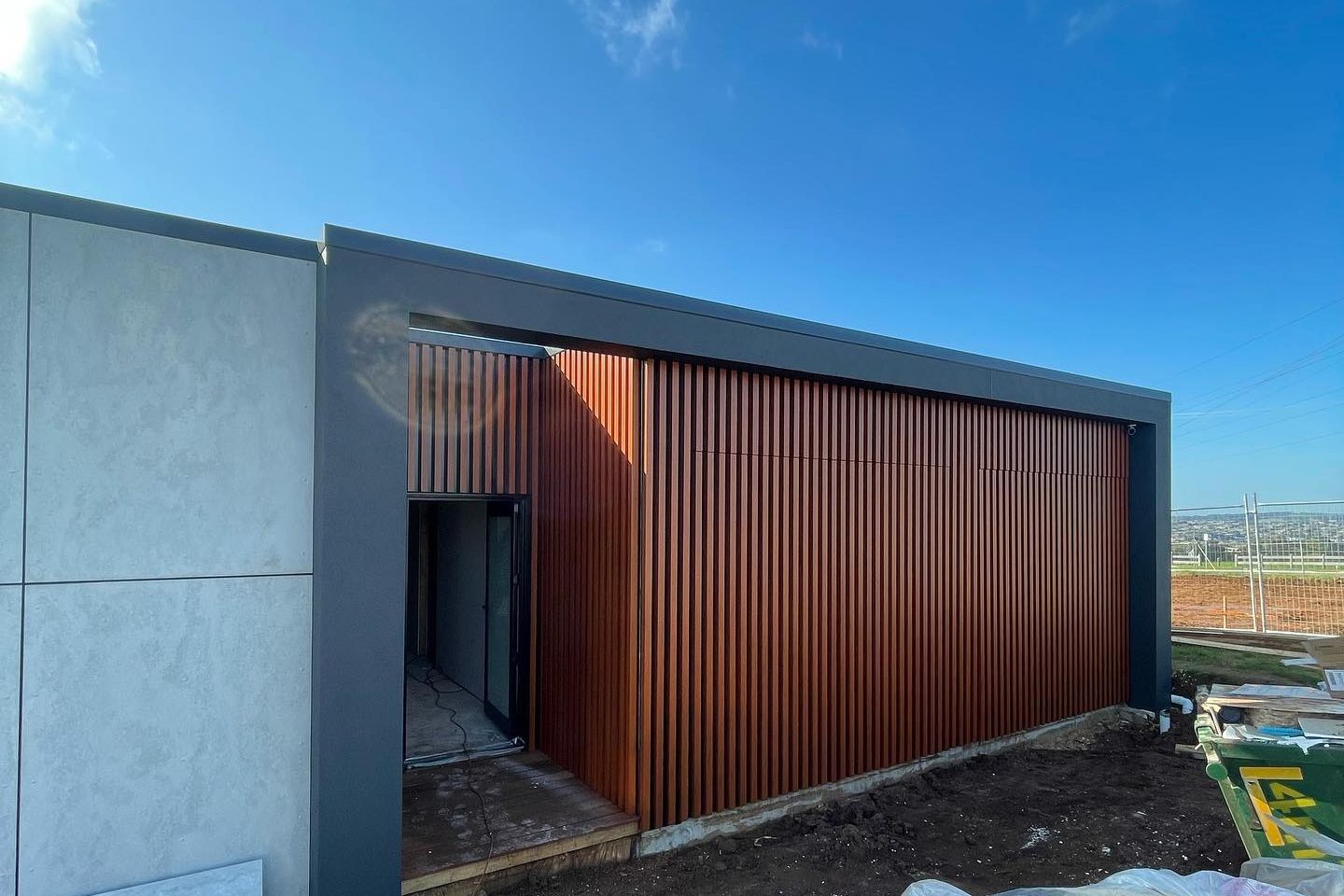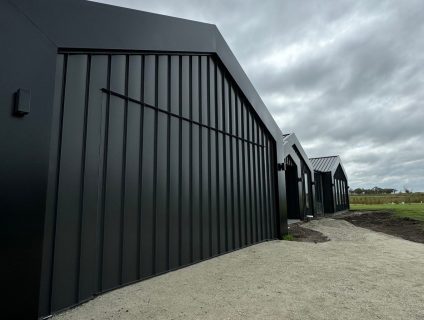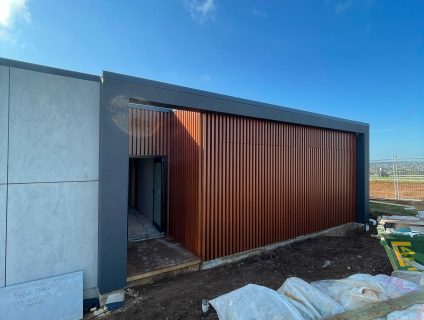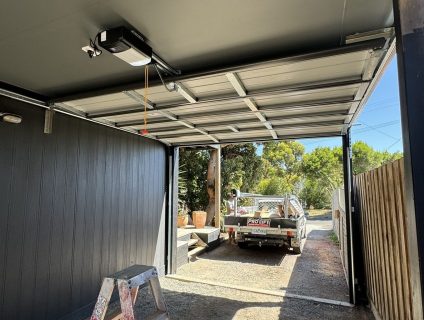Your garage door is one of the most important features of your home. Not only does it provide convenience, security, and protection for your vehicles and belongings, but it also plays a significant role in the curb appeal and value of your property. However, like all mechanical systems, garage doors can experience wear and tear over time. Knowing when to repair or replace your garage door can help prevent more costly damage, ensure safety, and keep your door functioning smoothly.
Here are our top tips to help you when deciding which is more appropriate.

Repairing your garage door
1. Unusual Noises
Garage doors should operate smoothly and quietly. If you notice grinding, squealing, or banging noises when opening or closing your door, it’s a sign that something’s not right. These sounds usually indicate that the door’s springs, rollers, or bearings are worn out and need lubrication, adjustment, or replacement. Ignoring unusual noises can lead to further damage, so it’s essential to address the issue promptly.
2. Slow or Jerky Movement
A smoothly operating garage door should open and close with ease. If the door is moving slowly, hesitating, or jerking during operation, it often points to issues with the springs, tracks, or opener. While minor delays can be caused by dirt or debris on the tracks, jerky movement or slow response typically requires professional attention. Repairing the issue early can prevent unnecessary wear and tear and ensure the door operates efficiently.
3. The Door Comes Off Track
If your garage door has come off its tracks, it is no longer safe to operate. This is a serious issue that requires immediate attention from a professional. Garage doors are heavy, and when they come off track, they can be difficult to realign and potentially dangerous if not handled correctly. It’s important to avoid using the door until it’s repaired and professionally realigned.
4. Difficulty Opening or Closing
Struggling to open or close your garage door? This could be a sign of a malfunctioning opener, broken springs, or misaligned tracks. If your door is getting stuck halfway or becomes difficult to operate, it can lead to further issues with the opener motor and other components. If troubleshooting simple issues like batteries or switches doesn’t work, it’s best to call a professional to fix the underlying problem.
5. Sagging or Uneven Door
A sagging or uneven garage door is a common issue, especially with older models or wooden doors. If you notice that the door appears off balance, with one side lower than the other, or if it sags in the middle, it’s likely due to broken springs, cables, or a warped door. Not only does this affect the appearance of your garage, but it can also make the door more difficult to operate and cause further damage if left unchecked.
6. Unresponsive Remote or Wall Switch
When your remote control or wall switch stops working, it can be frustrating. Sometimes, the issue is as simple as dead batteries. However, if replacing the batteries doesn’t resolve the issue, the problem could be with the opener motor, electrical connections, or the sensors. It’s a good idea to check for visible issues like disconnected wires, but if these simple fixes don’t work, it may be time to call in a professional.
7. Excessive Vibrations
Garage doors that vibrate excessively during operation can be unsettling. This issue is usually caused by loose or damaged parts, such as the rollers, tracks, or springs. These vibrations not only make the door difficult to operate but can also lead to premature wear and tear. If your door shakes or rattles when opening or closing, it’s best to have it inspected by a technician to prevent further damage.
8. Visible Wear and Tear
Take a moment to inspect your garage door regularly for visible signs of damage, such as dents, rust, cracks, or fraying cables. Even small issues can escalate into bigger problems if they’re not addressed in a timely manner. For example, rust or cracks can weaken the door’s structure, while frayed cables can snap and cause the door to become inoperable. If you notice any visible damage, it’s a good idea to get the door repaired before the issue worsens.
9. Broken Springs or Cables
Broken springs and cables are one of the most common and serious issues with garage doors. These components bear the weight of the door and help it operate smoothly. If a spring or cable snaps, the door may become impossible to lift or could even fall. Broken springs and cables are not a DIY fix due to the tension and weight they hold, so always call a professional technician to handle these repairs safely.
10. Failure to Stay Closed
If your garage door opens and closes but fails to stay down, it’s a sign of a malfunction. This could be due to faulty sensors, broken springs, or an issue with the opener motor. If the door doesn’t stay closed, it compromises the security of your home, so it’s essential to address the issue immediately. A professional technician can quickly diagnose the problem and restore the door’s functionality.
Replacing your garage door
1. Frequent and Costly Repairs
If you find yourself frequently repairing your garage door, it might be time to replace it. Common issues like malfunctioning openers, broken springs, or misaligned tracks may be easily repaired, but when these problems become recurring, it’s often more cost-effective to replace the door altogether. Constant repairs can add up quickly, and in some cases, they may not even address the root cause of the issue, leading to more problems down the road.
2. Visible Damage or Dents
Visible damage such as large dents, cracks, or holes in the garage door can detract from your home’s curb appeal and indicate structural damage. While minor dents can sometimes be repaired, significant damage often compromises the integrity of the door and can affect its performance. A door with extensive damage may not seal properly, allowing drafts or moisture to enter your garage, which can lead to higher energy bills. If the damage is beyond repair, replacing the door is the best option to maintain the appearance and functionality of your garage.
3. Reduced Energy Efficiency
Old garage doors, particularly those that are made of single-layered materials, can be inefficient at insulating your home. If you notice that your garage is unusually cold in the winter or hot in the summer, your door might not be providing the insulation it once did. Newer garage doors come with better insulation materials that help maintain a more stable temperature in your garage, which can reduce your energy costs. If your current door is no longer keeping the elements out, replacing it with a more energy-efficient model can provide long-term savings.
4. Noisy Operation
If your garage door is making loud, grinding, or squeaking noises, it could be a sign of mechanical failure. While some noise is normal as the door ages, excessive noise indicates that parts like the springs, rollers, or opener are worn out and need repair or replacement. If the noise persists even after repairs, it may be an indication that the door has reached the end of its lifespan and needs to be replaced. A new, modern garage door will operate smoothly and quietly, making for a much more pleasant experience.
5. Frequent Breakdowns
Garage doors are designed to last for a long time, typically between 15 and 30 years, depending on the material and level of maintenance. However, if your garage door is experiencing frequent breakdowns, such as getting stuck halfway or failing to open and close properly, it could be a sign that the door’s internal components are worn out. Over time, the springs, cables, and opener can become so damaged that repairs are no longer effective. If your door is constantly malfunctioning, replacing it with a new one will restore convenience and functionality.
6. Increased Home Value with a New Door
One of the most noticeable elements of your home’s exterior is the garage door. A dated or worn-out garage door can negatively impact the curb appeal of your property and lower its value. Replacing an old, unattractive door with a new, modern model can instantly boost your home’s appearance and increase its resale value. In fact, garage door replacements are known to provide one of the highest returns on investment in home improvement projects. If you’re planning to sell your home soon or simply want to enhance its appeal, investing in a new garage door is a smart choice.
7. Lack of Safety Features
Older garage doors may lack the advanced safety features that are now standard in newer models. Features like automatic reversal systems (which reverse the door if it detects an obstruction), photo-eye sensors (which prevent the door from closing on people or pets), and improved locking mechanisms are important for the safety of your home and family. If your garage door doesn’t have these modern safety features, it may be time to replace it with one that offers improved security and peace of mind.
8. Outdated Style
Garage door trends evolve over time, and what looked good 20 years ago may no longer fit the aesthetic of your home. If your garage door looks outdated or no longer complements your home’s architecture, replacing it can improve your home’s overall design. Modern garage doors come in a variety of styles, from traditional wooden doors to sleek, contemporary steel designs. Updating your garage door can give your home a fresh, contemporary look that aligns with current design trends.
9. Failure to Stay Closed
If your garage door won’t stay closed, even after resetting the opener or fixing the springs, it could indicate a serious issue with the door’s internal components. This can compromise the security of your home, leaving your garage vulnerable to break-ins or pests. If the door’s sensors, opener, or springs are beyond repair, it’s time to replace the entire door. A new door will ensure that your garage remains secure and functional.
10. The Door Is Too Old
Even with proper maintenance, garage doors wear out over time. Most doors have a lifespan of about 15 to 30 years, but older doors can begin to show signs of age, such as rust, warping, or cracked panels. If your door is nearing or has surpassed its expected lifespan, it’s a good idea to start thinking about replacing it. A new door will not only improve the appearance of your home but also provide better functionality and energy efficiency.



